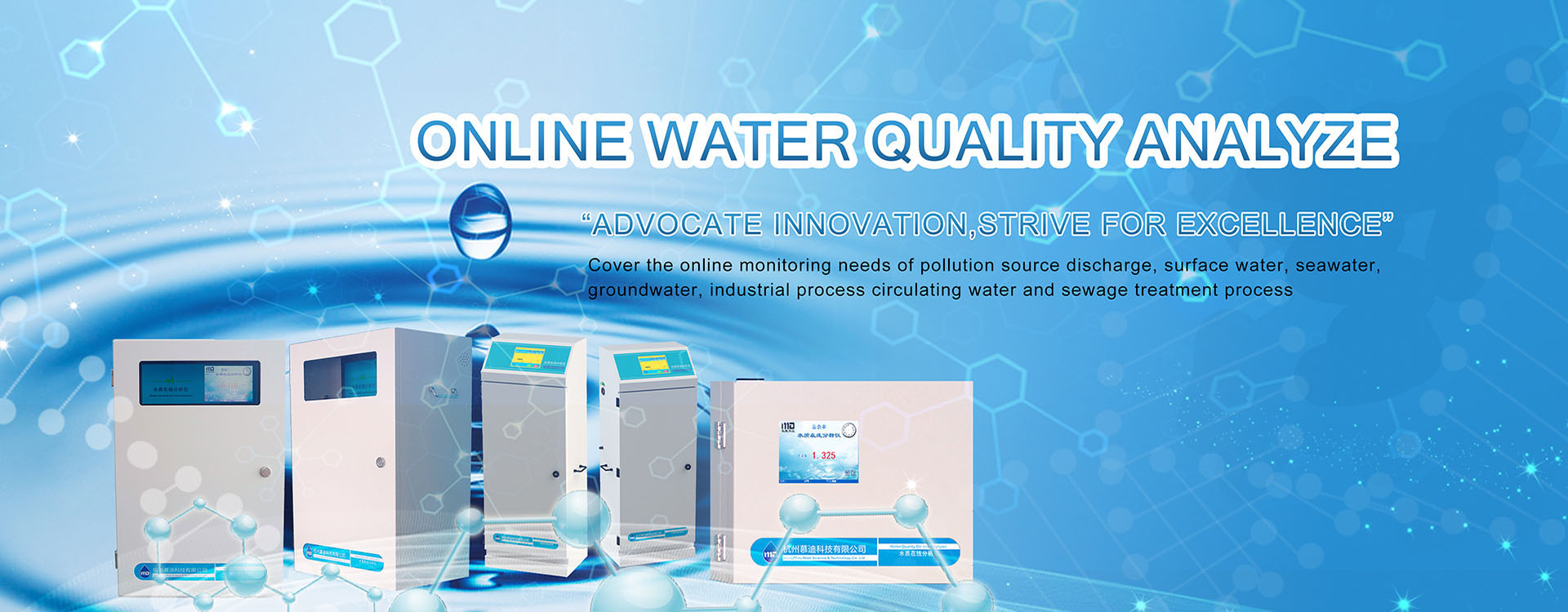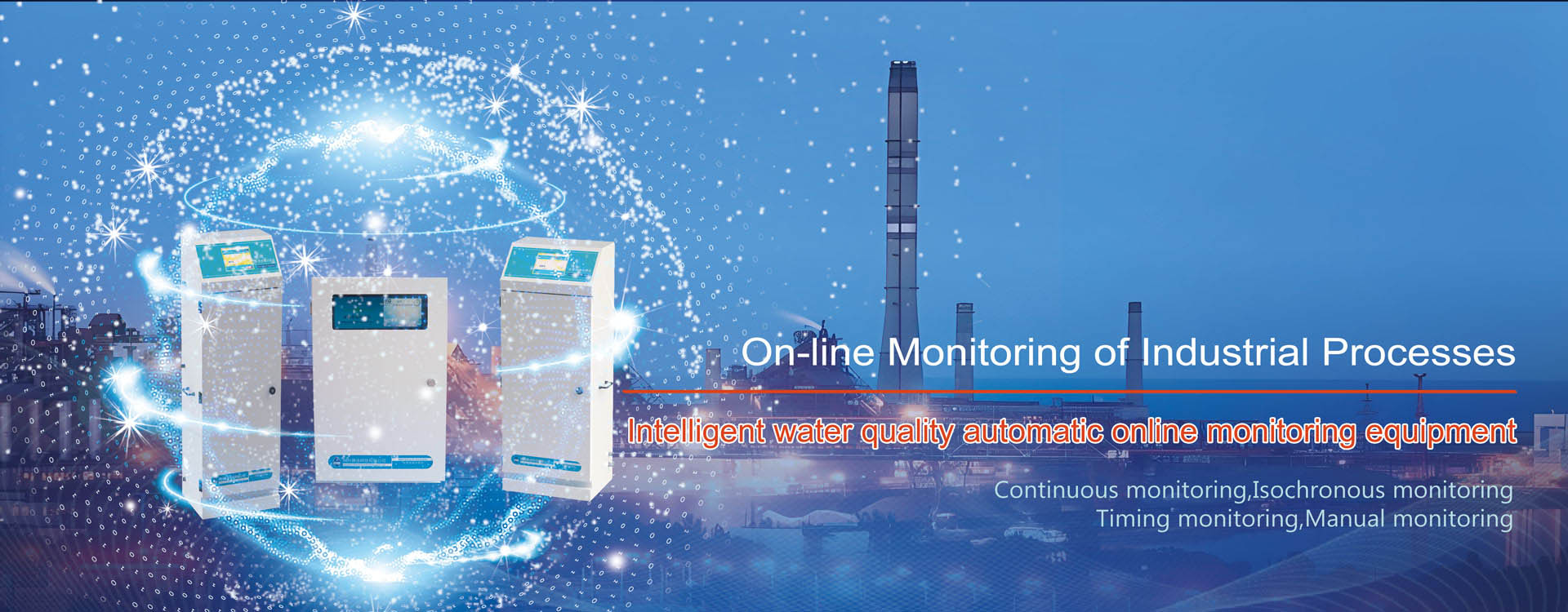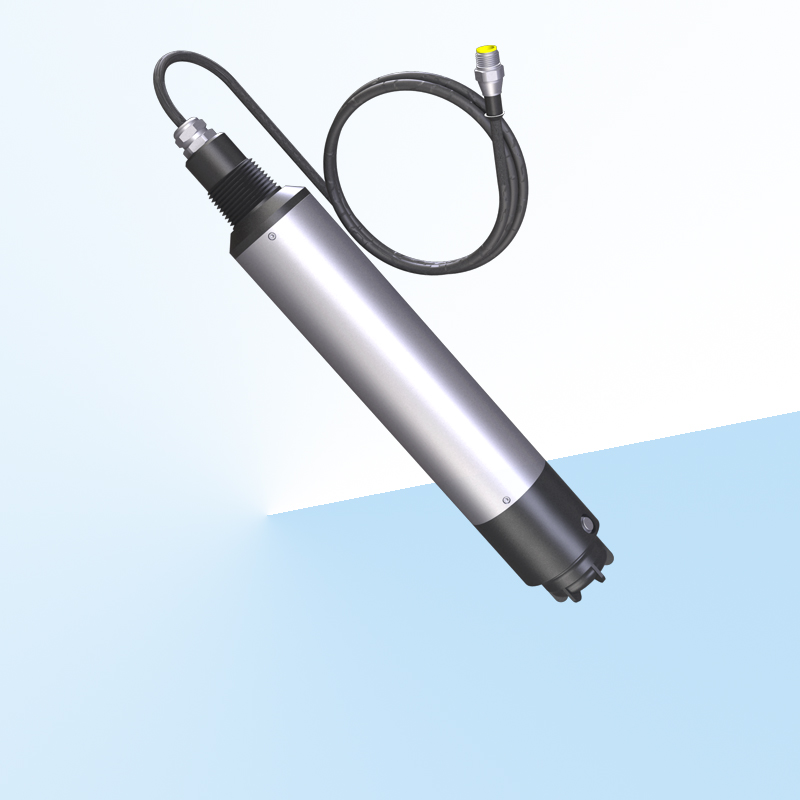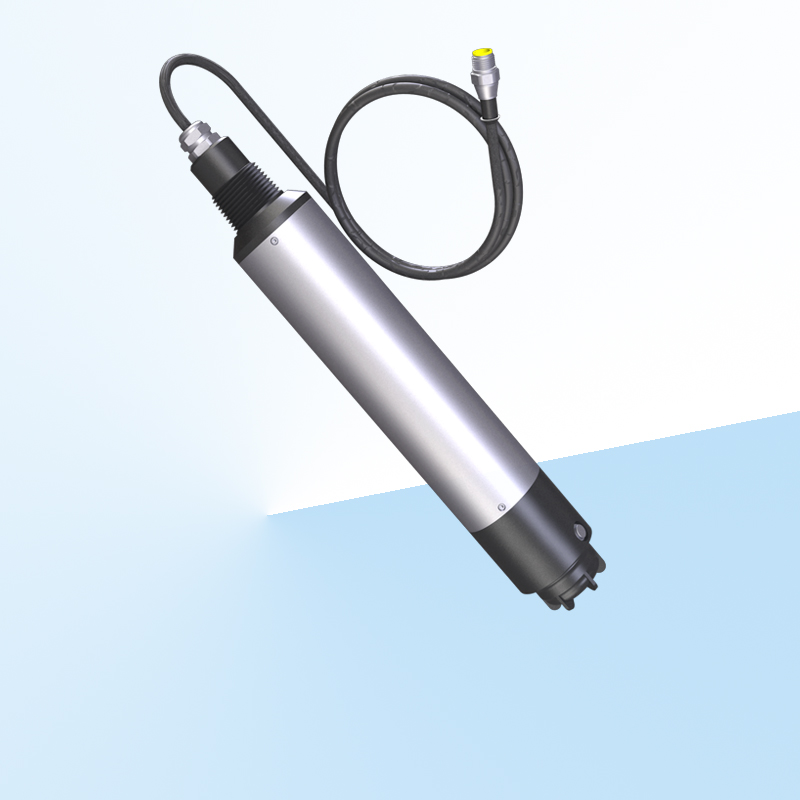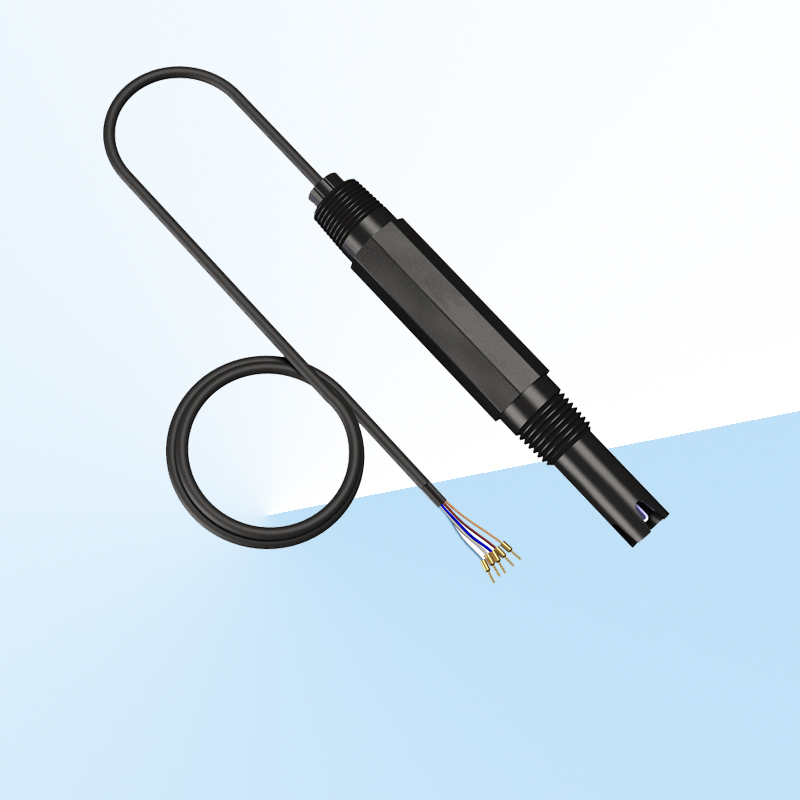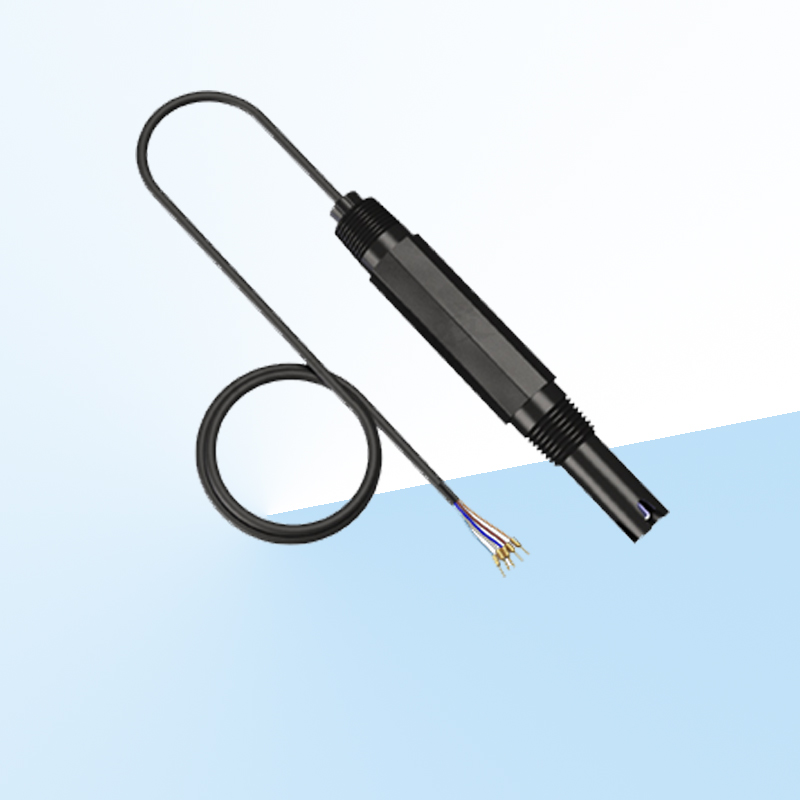
- Conventional Pollution Online Monitoring Instrument
- Drinking Water Online Monitoring Instrument
- Special Parameter Online Monitoring Instrument
- Heavy Metal Online Monitoring Instrument
- Industrial Process Water Online Monitoring Instrument
- Anodic Stripping Voltammetry Heavy Metal Monitoring Instrument
- Laboratory Online Testing Instrument
- Water Treatment Process Instruments
The online analyzer with five conventional water quality parameters can meet the different needs of customers,by selecting sensors, multiple different parameter values can be monitored online simultaneously,This includes temperature/pH/conductivity/dissolved oxygen/turbidity/sludge concentration/chlorophyll/blue-green algae, etc.
Details Introduction
Fluorescence dissolved oxygen sensor
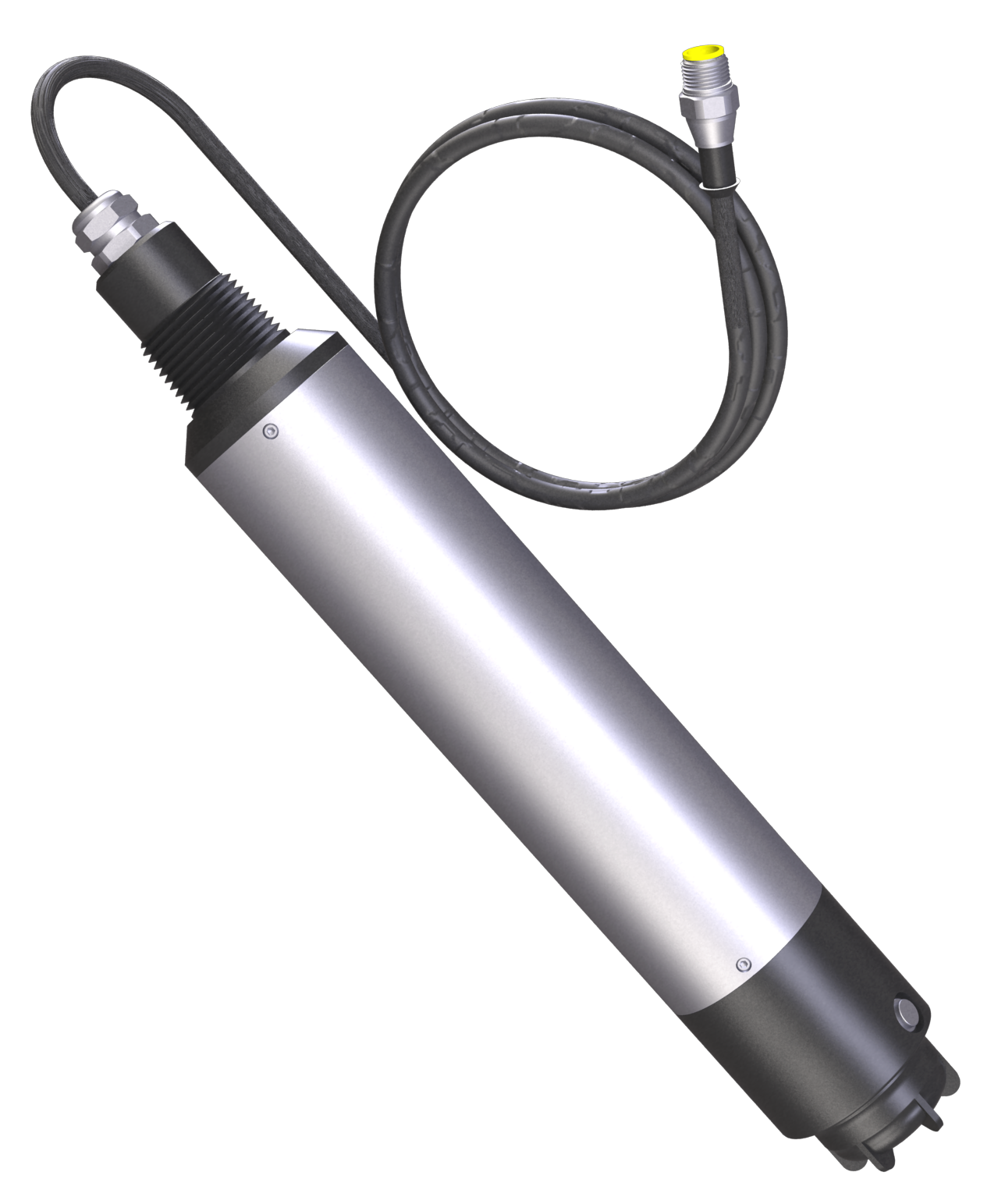
Measurement Principle
The dissolved oxygen sensor uses fluorescence method to measure dissolved oxygen, and the top of the sensor is covered with a layer of fluorescent material. When the blue light emitted by the sensor shines on the fluorescent material, the fluorescent material is excited and emits red light. Due to the energy carried away by oxygen molecules (quenching effect), the time and intensity of the excited red light are inversely proportional to the concentration of oxygen molecules. The concentration of dissolved oxygen in water can be calculated.
Main Features
· The sensor adopts an oxygen sensitive membrane with built-in NTC temperature compensation function, and the measurement results have good repeatability and stability;
· There is no oxygen consumption during measurement and no flow rate/agitation requirements;
· Breakthrough fluorescence technology, without membranes and electrolytes, requiring minimal maintenance;
· Factory calibration, no calibration required for one year, can be calibrated on-site;
· Digital sensors with strong anti-interference ability and long transmission distance;
· The on-site installation of sensors is convenient and fast, achieving plug and play.
Technical Parameters
| Measurement range dissolved oxygen: | 0-20 mg/L, 0-20 ppm; |
| Measurement accuracy dissolved oxygen: | measurement value ± 3%; Temperature: ± 0.5 ℃ |
| Pressure range: | ≤ 0.3Mpa |
| Calibration: | automatic air calibration, sample calibration |
| Sensor material body: | SUS316L+PVC (regular version); O-ring: fluororubber; Cable: PVC |
| Storage temperature: | -15 to 65 ℃ |
| Working temperature: | 0 to 45 ℃ |
| Size diameter: | 55mm * length 342mm |
| Weight: | 1.85KG |
| Protection level: | IP68/NEMA6P |
| Cable length: | the standard cable length is 10 meters, which can be extended to 100 meters |
Turbidity Sensor
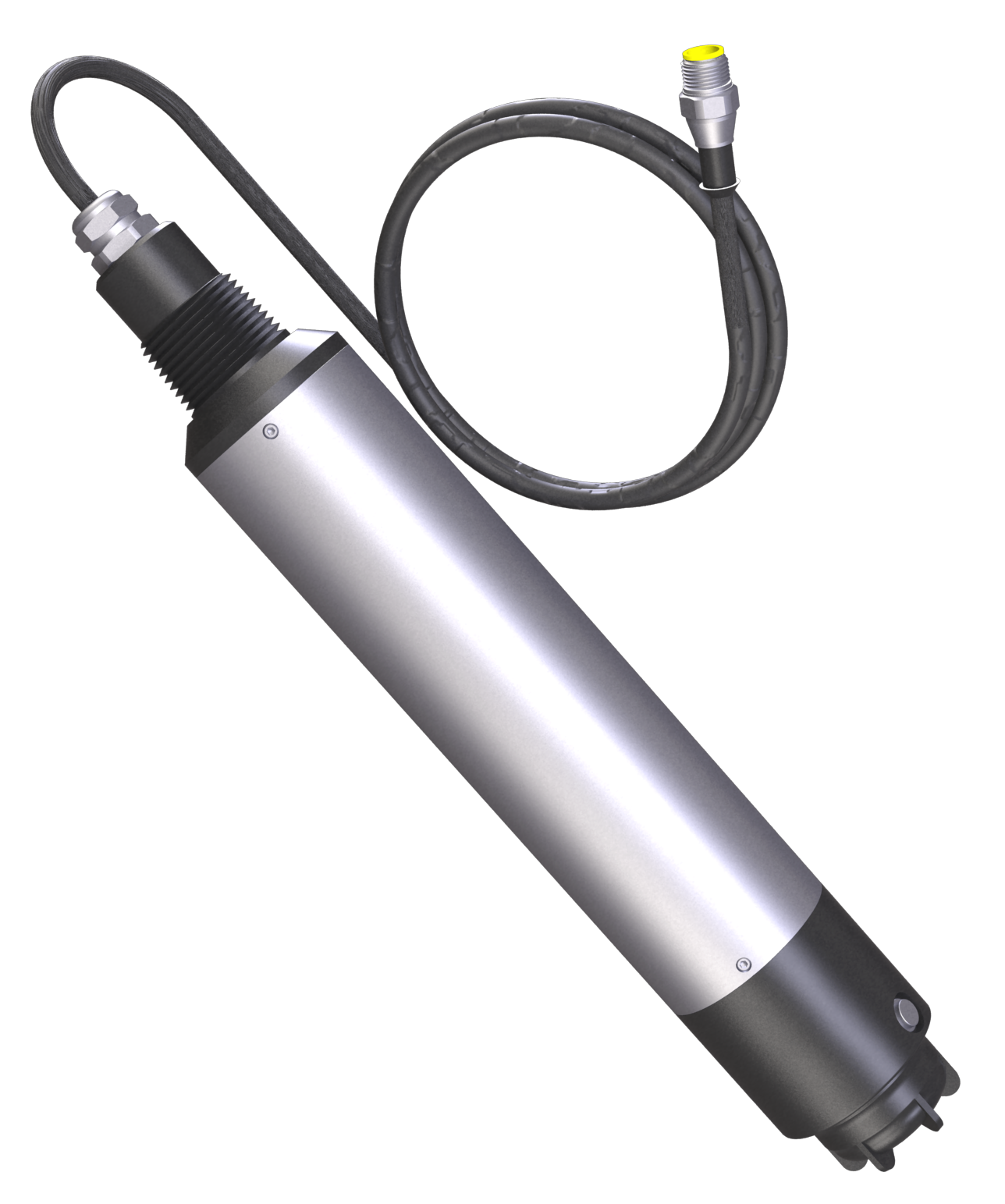
Measuring Principle
The turbidity sensor is based on the combined infrared absorption scattering light method. The infrared light emitted by the light source is scattered by the turbidity in the sample, and then converted into an electrical signal by a photodetector. After analog and digital signal processing, the turbidity value of the sample is obtained.
Main Features
· The sensor adopts dual beam infrared scattering spectrophotometer detection technology, which has good repeatability and stability;
· The application of ISO7027 standard method (infrared light scattering technology) can eliminate the influence of sample color;
· Equipped with self diagnosis function to ensure accurate data;
· Optional cleaning brush with automatic cleaning function, greatly reducing sensor maintenance;
· Digital sensors with strong anti-interference ability and long transmission distance;
· Standard digital signal output, which can be integrated and networked with other devices without a controller;
· The on-site installation of sensors is convenient and fast, achieving plug and play.
Technical Parameter
| Measurement range: | 0.01-100 NTU, 0.01-4000 NTU; |
| Measurement accuracy: | less than ± 1% of the measured value, or ± 0.1NTU, whichever is greater; |
| Pressure range: | ≤ 0.4Mpa; |
| Flow rate: | ≤ 2.5m/s, 8.2ft/s; |
| Calibration: | sample calibration, slope calibration; |
| Main materials of sensors: | body: SUS316L+PVC (regular version), SUS316L titanium plated+PVC (seawater version);
O-ring: fluororubber; Cable: PVC; |
| Storage temperature: | -15 to 65 ℃; |
| Working temperature: | 0 to 45 ℃; |
| Size: | diameter 60mm * length 256mm; |
| Weight: | 1.65KG; |
| Protection level: | IP68/NEMA6P; |
| Cable length: | standard 10 meter cable, can be extended up to 100 meters; |
PH Sensor

Measuring Principle
A sensor is a composite electrode composed of a precious metal indicator electrode and a reference electrode combined together. The measurement of pH is based on the potential difference measured by the working battery composed of the measuring electrode and the reference electrode in the solution, using the linear relationship between the pH value of the test solution and the potential size of the working battery to achieve online monitoring of pH.
Functional Characteristics
· Has good repeatability and stability;
· Simple cleaning and activation, and fast equilibrium speed;
· Automatic temperature compensation function;
· Optional analog-to-digital conversion module to achieve digital signal output, strong anti-interference ability, and long transmission distance;
· Optional analog-to-digital conversion module to achieve standard digital signal output (RS485), enabling integration and networking with other devices without a controller;
· The on-site installation of sensors is convenient and fast, achieving plug and play.
Technical Parameter
| Measurement range: | pH: 2-12 pH; Temperature: 0-80 ℃; |
| Measurement accuracy: | pH: ± 0.01pH; Temperature: ± 0.5 ℃; |
| Pressure range: | ≤ 0.6Mpa; |
| Zero potential pH value: | 7± 0.25 pH (15mV); |
| Slope: | ≥ 95%; |
| Internal resistance: | ≤ 250M Ω; |
| Alkali error: | 0.2pH (1mol/L Na+pH14) (25 ℃); |
| Response time: | ≤ 10 seconds (reaching 95% of the endpoint value) (after stirring); |
| Main materials of sensor: | black polypropylene, Ag/Agcl reference gel; |
| Storage temperature: | -15 to 65 ℃; |
| Medium temperature: | 0 to 80 ℃; |
| Size: | diameter 30mm * length 195mm; |
| Weight: | 0.2KG; |
| Protection level: | IP68/NEMA6P; |
| Cable length: | standard cable length: 6 meters, extendable; |
Conductivity Sensor
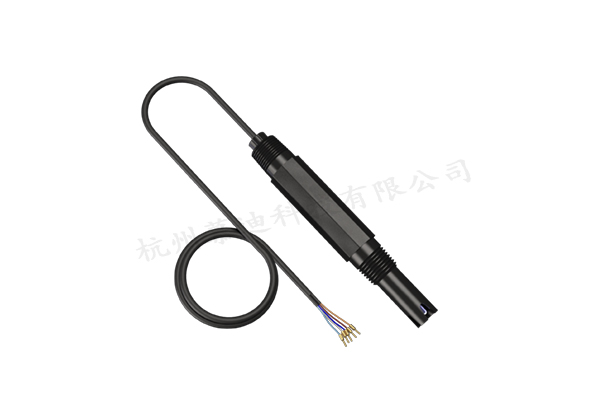
Measurement Principle
The conductivity sensor is a glass platinum electrode. The principle of instrument measurement is to place two plates (conductive plates) in the sample solution, and apply a voltage to both plates to measure the current. Generally speaking, voltage is in the form of a sine wave. The conductivity is determined by the Ohm formula based on voltage and current values.
Functional Features
· Has good repeatability and stability;
· Simple cleaning and activation, and fast equilibrium speed;
· Automatic temperature compensation function;
· Optional analog-to-digital conversion module to achieve digital signal output, strong anti-interference ability, and long transmission distance;
· Optional analog-to-digital conversion module to achieve standard digital signal output (RS485), enabling integration and networking with other devices without a controller;
· The on-site installation of sensors is convenient and fast, and terminal connections are used.
Technical Parameter
| Measurement range: | 10-2000 us/cm; Temperature: 0-80 ℃; |
| Measurement accuracy: | Conductivity: less than ± 1% of the measured value or ± 1us/cm, whichever is greater;
Temperature: ± 0.5 ℃; |
| Pressure range: | ≤ 0.6Mpa; |
| Response time: | ≤ 10 seconds (reaching 95% of the endpoint value) (after stirring); |
| Main materials of the sensor: | black polypropylene shell, glass platinum electrode; |
| Storage temperature: | -15 to 65 ℃; |
| Medium temperature: | 0 to 80 ℃; |
| Size: | diameter 30mm * length 195mm; |
| Weight: | 0.2KG; |
| Protection level: | IP68/NEMA6P; |
| Cable length: | standard cable length: 6 meters, extendable. |

